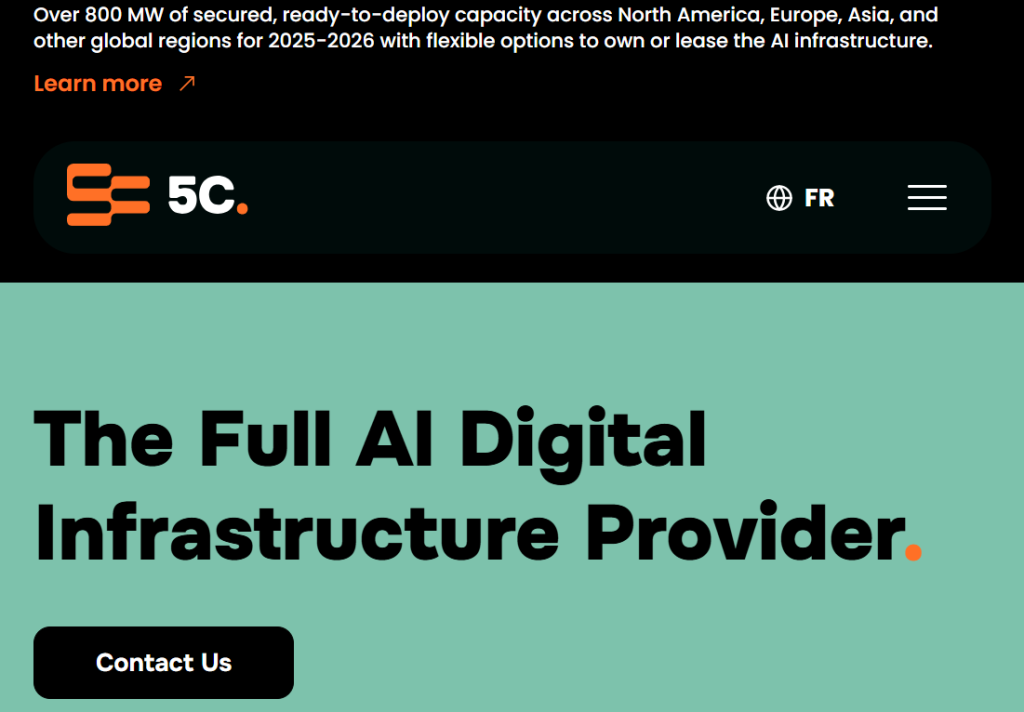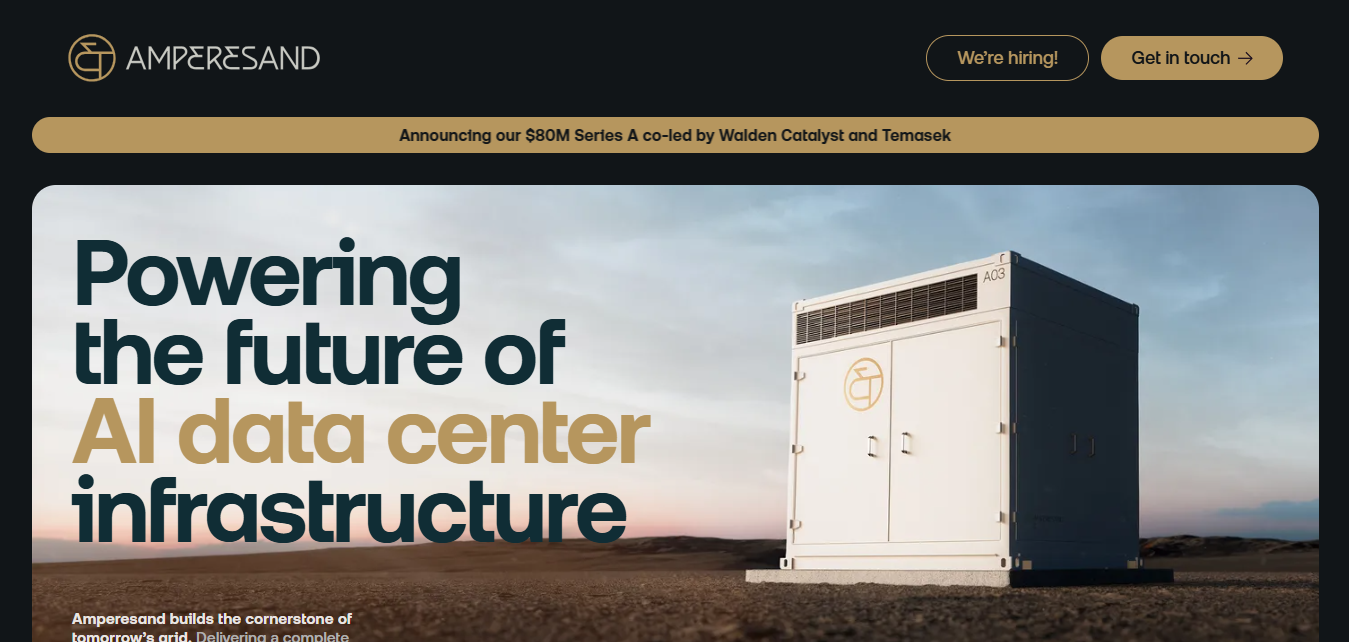5C Raises $835M to Lead the Future of AI-Driven Energy Infrastructure
August 11, 2025
byFenoms Start-Ups

In one of the largest clean energy infrastructure rounds this year, 5C has secured an eye-popping $835 million to scale its AI-first platform aimed at transforming how energy systems are planned, deployed, and optimized. Spearheaded by Jonathan A., the raise was backed by industry giants Brookfield and Deutsche Bank, signaling a powerful vote of confidence in the company's ability to become a foundational layer for the green energy transition.
This is not just capital - it's conviction. And in a world chasing net-zero targets at scale, that distinction matters.
Energy Infrastructure Is Broken. 5C Has a Blueprint.
Today’s power grids are buckling under the weight of rising demand, regulatory bottlenecks, and aging infrastructure. What 5C proposes is bold: an intelligent layer that rewires how clean energy assets are deployed and managed - using machine learning, predictive modeling, and deep optimization across energy systems.
Where legacy players rely on static forecasting, 5C's platform adapts in real-time, capturing granular data from thousands of variables - from weather volatility and grid congestion to policy changes and ESG mandates. The result? Faster deployments, higher ROI for renewable projects, and dramatically lower risk for stakeholders.
The scale and scope of what 5C is building would traditionally take decades and billions. But here's the kicker: 5C’s technology unlocks these results at software speed, not infrastructure speed.
Founders: Read This If You're Building in InfraTech
One of the key levers in 5C’s traction wasn’t just their tech - it was their go-to-market motion designed for complex stakeholder ecosystems. Most infra-focused startups struggle to align regulators, investors, utilities, and communities. 5C tackled this by:
- Designing modular value paths for every stakeholder - so municipalities could see compliance wins, while private utilities saw better asset utilization.
- Building AI explainability features that earned trust with energy regulators and ESG auditors.
- Architecting a layered integration model that didn’t require clients to rip and replace legacy tools.
Here’s the founder insight: If you're selling into enterprise, infra, or govtech - build trust into the product, not just the pitch. The difference between a POC and a 9-figure contract often comes down to whether your system respects institutional complexity while still enabling digital acceleration.
5C didn’t just sell a faster engine - they sold a cleaner, smarter GPS that could integrate into any vehicle.
Follow the Money, Follow the Momentum
The involvement of Brookfield, one of the world’s largest infrastructure and energy investors, underlines the seismic shift toward intelligent grid technologies. Brookfield has increasingly focused its portfolio on tech-enabled solutions that reduce friction in renewable deployment.
Deutsche Bank's participation, meanwhile, highlights growing interest from financial institutions in platforms that reduce capex unpredictability and optimize yield for infrastructure portfolios.
Both firms see 5C as a strategic lever - not a bet.
Jonathan A. shared that the funding will primarily go toward:
- Expanding grid intelligence operations across North America and Europe
- Accelerating product development of 5C's predictive deployment suite
- Hiring across engineering, data science, and policy affairs
- Strengthening integrations with major utility software partners
Why 5C’s Model Hits Different
5C’s edge isn’t just in its tech - it’s in its systems thinking approach to the clean energy value chain. Instead of building vertical SaaS for one niche of the problem (say, wind farm layout planning or EV charger placement), 5C zoomed out to architect a platform that connects:
- Site selection
- Regulatory pathway modeling
- Financing stack optimization
- Real-time grid impact analysis
- Community and climate equity mapping
That’s a full-stack view few startups in the clean energy SaaS space have the appetite - or skillset - to take on.
And it’s why this isn’t your typical climate tech play.
Market Outlook: Clean Energy Infrastructure Is a $3.4T Opportunity
According to BloombergNEF, global investment in clean energy reached $1.8 trillion in 2023, with infrastructure-focused segments - like solar farms, wind turbines, and grid tech - representing nearly 60% of that. The International Energy Agency (IEA) forecasts the world will need to invest $3.4 trillion annually in energy infrastructure by 2030 to meet climate targets.
Meanwhile, AI deployment in grid optimization is rising fast. A recent McKinsey report projects AI-powered energy systems could unlock $300 billion in operational efficiencies over the next decade.
Put simply: the clean energy revolution is not just about building - it’s about building smart. And 5C is positioning itself as the operating system for that future.
Final Thoughts
This $835 million raise is more than a financial milestone - it’s a signal. A signal that AI-native infrastructure platforms are no longer experimental. They are essential.
For founders, the takeaway is clear: the next decade will be defined by startups that can turn complexity into clarity, and policy inertia into platform velocity.
Jonathan A. and team are betting that with the right intelligence layer, energy infrastructure can be not only cleaner - but also faster, fairer, and fundamentally smarter.
Stay tuned - because the 5C playbook might just become the gold standard for climate-aligned infrastructure tech.









